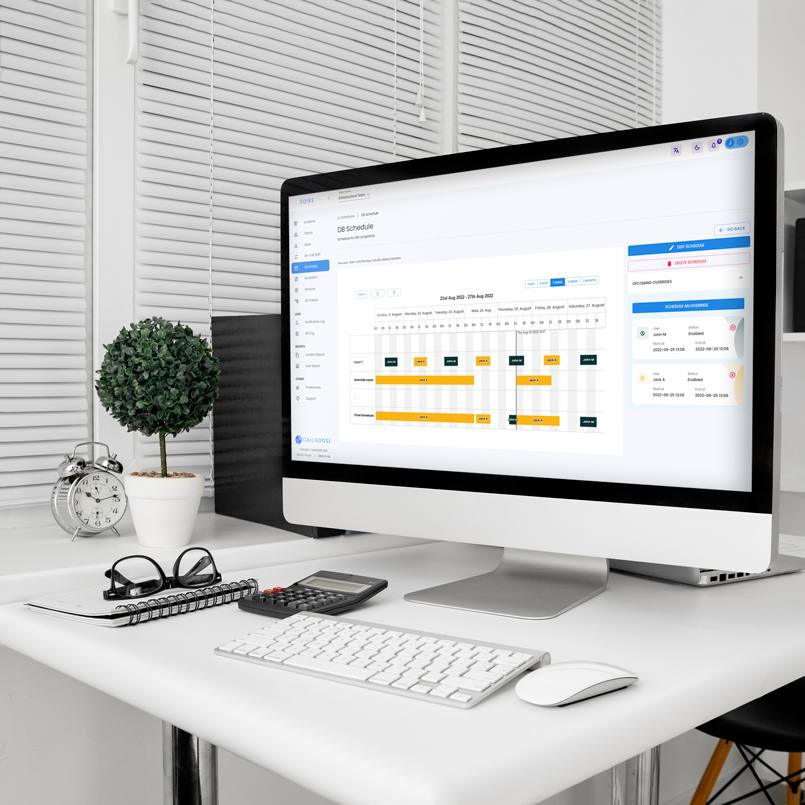Getting Started
Special
SINGLE SIGN-ON
Teams
Users
Escalation Policies
Service
Incident
Request
On-Call Shift
Schedules
Schedule Override
Logs
API
Webhook
Apps Integration
Reports
Preference
Profile
Automation
Self-Service Portal
FAQ
Self-Service Portal Page
A Self-Service Portal page is a web page that represents a set of functionalities within the Self-Service Portal. It can be configured with different security settings and provides access to Self-Service Portal items.
You can add multiple pages under your workspace.
Example:
https://selfservice.callgoose.com/zeazonz/private
* Here zeazonz is the unique handle, private is the page unique name.
Location
You can find this option in your dashboard by navigating to:
Dashboard → Self-Service Portal under the Automation category → Page Section
Creating a Page
Click the + ADD PAGE button. A configuration screen will open where you can enter and customize the page details.
1. UNIQUE Name
The Unique Name is the identifier used to access this page directly from the Self-Service Portal home.
Each page must have its own Unique Name — the same name cannot be used for multiple pages.
Once you’ve set up your Unique Name, the system will automatically generate two links for you:
- Direct URL – This is the public link to your self-service portal page. You can share it directly with users or add it to your website.
- Embed URL – Use this link if you want to embed the portal inside another webpage or application (for example, within an iframe).
2. Security
Here we setup the security for the Self-Service Page to control how it is accessed. There are several options.
Public or Private.
- Public - The page is fully open and does not require additional security. However, you can still enable SSO if needed.
- Private - The page have additional security. To access it, you must use a security token. The token is automatically generated, and you can regenerate it at any time.
Single Sign-On (SSO)
SSO provides an additional layer of security for your Self-Service Portal. You can enable one or more SSO providers to control how users authenticate.
1. Google SSO
- Platform-Level Integration – Google SSO is already integrated at the platform level, so no extra setup is required.
- Domain Restrictions – You can restrict access by adding one or more domains in the Add Domains textbox. If no domains are specified, all Google accounts will be allowed to sign in.
💡 Tip: Use domain restrictions if you want to limit access only to users from your organization (e.g., yourcompany.com).
2. Microsoft SSO
- Platform-Level Integration – Microsoft SSO is already integrated at the platform level, so no extra setup is required.
- Domain Restrictions – You can restrict access by adding one or more domains in the Add Domains textbox. If no domains are specified, all Microsoft accounts will be allowed to sign in.
💡 Tip: Use domain restrictions if you want to limit access only to users from your organization (e.g., yourcompany.com).
3. SAML 2.0
- You can integrate any SSO provider that supports SAML 2.0.
- Configuration typically requires exchanging metadata between your Identity Provider (IdP) and the Self-Service Portal.
- Follow this guide for detailed setup instructions.
3. DATA
You can set up the data that will be displayed on your Self-Service Page.
1. Categories
- Purpose: Categories help organize and filter self-service items on the page.
- How to Use: Add any values that make sense as filters.
- Example: Technical, HR, Finance, etc.
- Users can then filter items on the portal by these categories, making it easier to find relevant content.
2. Logo
- Purpose: The logo is displayed on the Self-Service Page to give your customers a branded experience, making the portal feel like it’s fully owned by your organization.
- How to Use: Upload an image file that represents your brand or service.
- Restrictions:
- Supported formats: .jpg, .png, .svg
- Maximum file size: 5 MB
💡 Tip: Use a high-resolution image with a transparent background (preferably .png or .svg) for the best appearance across all devices.
3. Brand
- Purpose: The brand name is displayed on the Self-Service Page to give customers a consistent, branded experience, making the portal feel like it is fully owned by your organization.
- How to Use: Enter a name that best represents your brand, product, or service.
3. Description
- Purpose: The description provides context about your service or organization on the Self-Service Page. It helps users understand what the portal represents.
- How to Use: Enter a clear and concise description that highlights your brand, product, or service.
Click on the Save button after filling all the required fields to save the page.
Editing a Page
Select the page you want to edit from the list.
A configuration screen will open where you can update the page details.
After making changes, click the Save button.
Deleting a Page
Select the page you want to delete
Click on the Delete button. For safety, you will be asked to confirm the page name before deletion.
Preview
You can see how the Self-Service Page will look with the data you’ve provided by clicking the Preview button. This allows you to review the layout, branding, and content before publishing.
💡 Tip: Always preview your page after making changes to ensure everything appears as expected for your users.
Self-Service Items
A Self-Service Portal page item represents an action that can be executed within a Self-Service Portal page. Items are created using Automation Workflows. After creating a page, you can add Self-Service Items. Follow here for more info.

